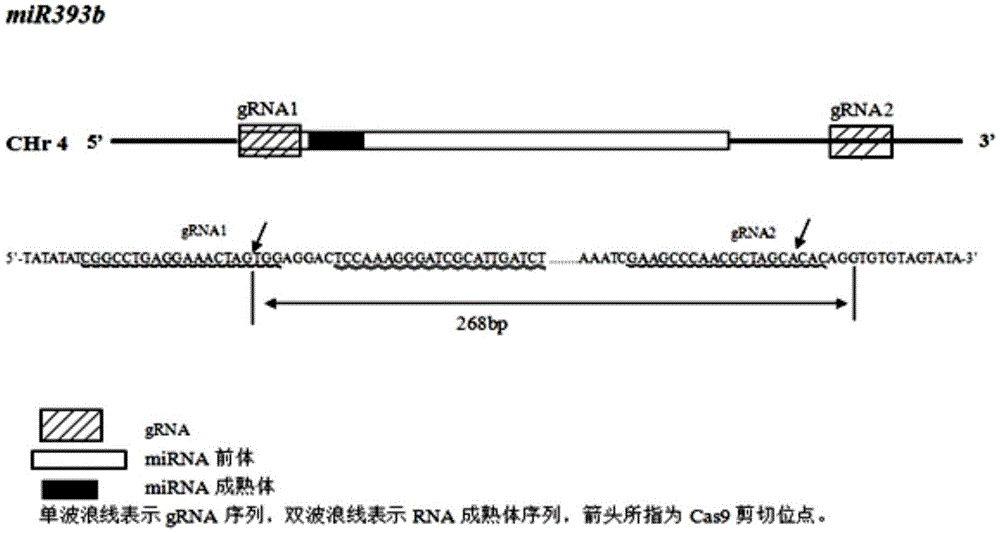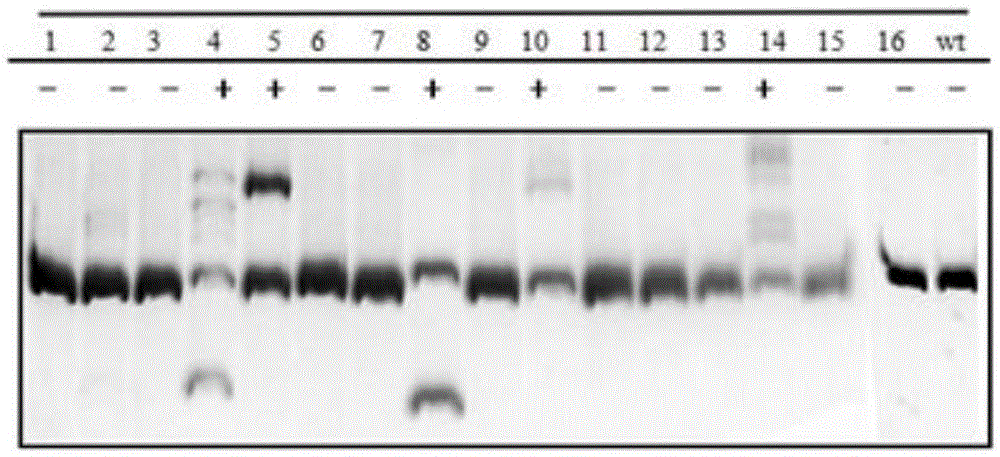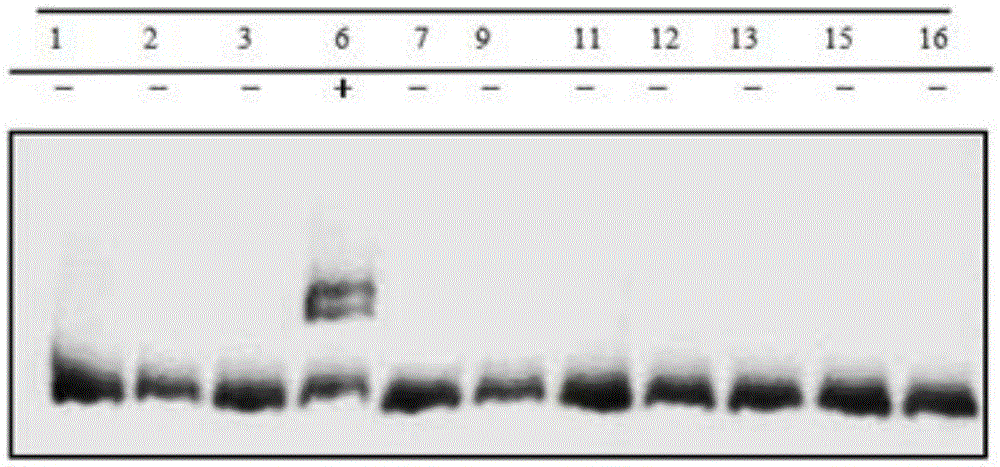Gene editing method for knocking out rice MIRNA393b stem-loop sequences with application of CRISPR(clustered regulatory interspersed short palindromic repeat)-Cas9 system
A stem-loop sequence and system knockout technology is applied in the field of rice transgenic material construction, which can solve the problems of missing rice mutants that have not been reported, inability to distinguish MIR393a and MIR393b genes, and inability to completely eliminate the role of MIR393 genes.
- Summary
- Abstract
- Description
- Claims
- Application Information
AI Technical Summary
Problems solved by technology
Method used
Image
Examples
Embodiment 1
[0048] Example 1 Obtainment and Identification of Rice MIRNA393b Stem-loop Sequence Knockout Line
[0049] The rice variety transferred in the present invention is Nipponbare (Oryza. Sativa L. spp. japonica, var Nipponbare).
[0050] 1. Selection of gRNA target sites
[0051] Since the MIR393b gene is located on the fourth chromosome of the rice genome, according to the principle of designing the target site of the CRISPR-Cas9 technology, the present invention designs the first target site on the precursor stem-loop sequence of the MIR393b gene, and the second The target site is 3' downstream of the stem-loop sequence. See figure 1 .
[0052] 2. Cloning of gRNA fragments and vector construction
[0053] 2.1 Using the plasmid pGTR as a template, use the PCR method to clone the partially overlapping fragments of the three fragments L1, L2, and L3. The primer sequences are as follows:
[0054] L1F: cgggtctcaggcaggatgggcagtctgggcaacaaagcaccagtgg (shown in SEQ ID NO: 1)
[0055...
PUM
 Login to View More
Login to View More Abstract
Description
Claims
Application Information
 Login to View More
Login to View More - R&D
- Intellectual Property
- Life Sciences
- Materials
- Tech Scout
- Unparalleled Data Quality
- Higher Quality Content
- 60% Fewer Hallucinations
Browse by: Latest US Patents, China's latest patents, Technical Efficacy Thesaurus, Application Domain, Technology Topic, Popular Technical Reports.
© 2025 PatSnap. All rights reserved.Legal|Privacy policy|Modern Slavery Act Transparency Statement|Sitemap|About US| Contact US: help@patsnap.com



